Four seasons is a marvelous gift of our planet to landscape photographers, at least in certain parts of the world. In the past, I preferred anything but winter. I always impatiently awaited fall colors, peaking around late October and beginning of November, or the lush green tones of mid-April. But in the past few years, I learned to love winter too. Well at least when there is snow and frost. Here are my tips on how to photograph snow in cold weather.
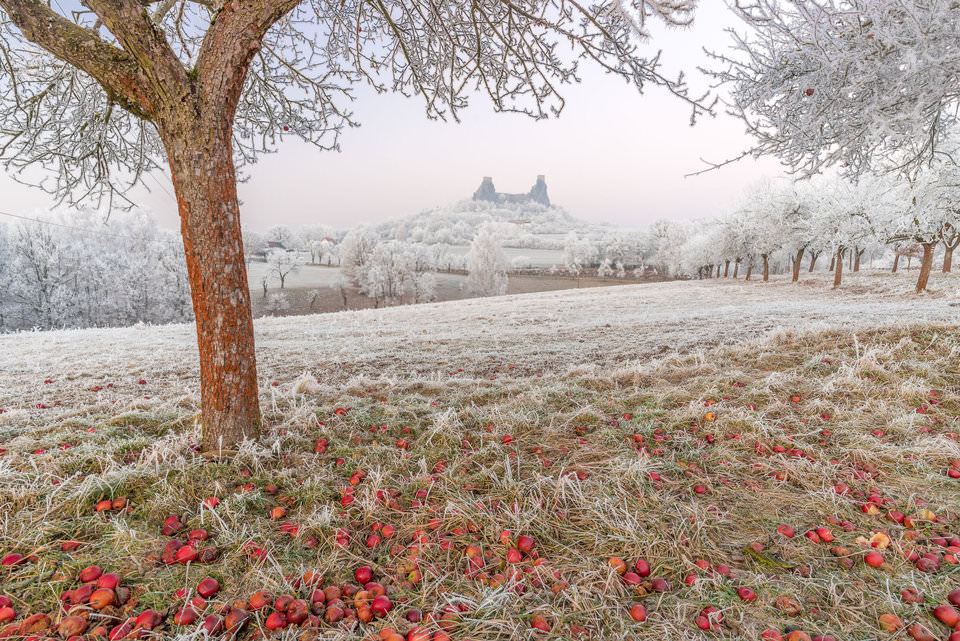
Winter is not an easy time to photograph, as some extreme conditions may occur. Among other issues, low temperatures often lead to discomfort for photographers and shorter battery life. Winter, however, brings several benefits for landscape photographers that are often underestimated:
- The sun hangs much lower over the horizon compared to other seasons;
- The sun rises in the southeast and sets in the southwest (in norther hemisphere) – which might be useful for some locations;
- The sun does not rise as early as in the summer;
- Snow and frost can substantially transform the atmosphere in many locations;
- Snow and ice can be very photogenic on their own;
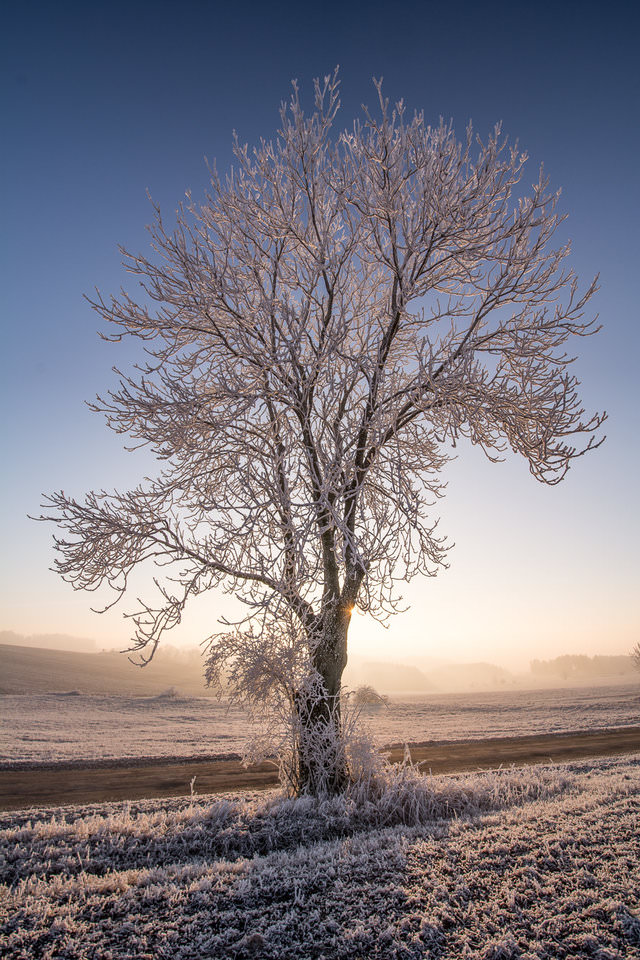
If you have not done so yet, perhaps it is time to get out in the cold and bring home some great photographs. Below are my ten tips for shooting winter landscapes.
1) Thorough Preparation is Important for Tough Conditions
Look at the weather forecast and prepare appropriate clothes. Pay attention not only to temperatures but also to wind speed and to air humidity – the latter two can decrease the subjective feel of the temperature big time. As a landscape photographer, you should be set up at your shooting location ideally 30-45 minutes before sunrise, as pre-sunrise pink clouds can show up pretty early on. But that is also when the temperatures reach their lowest point. The first photograph above was shot at the beginning of January of this year. When I got out of my car, it was -24.5°C (-12 Fahrenheit). Sunset photography can be slightly more weather-friendly in winter months, however, as soon as the sun disappears below the horizon (and you do want to stick around after sunset), temperatures typically drop very quickly too. What’s worse is that you would be standing right next to your camera, waiting patiently for the best light, which means lack of body movement and hence getting cold much quicker than usual. Therefore, it is critical to wear proper shoes and clothing that won’t let you down. Here are some recommendations in those areas:
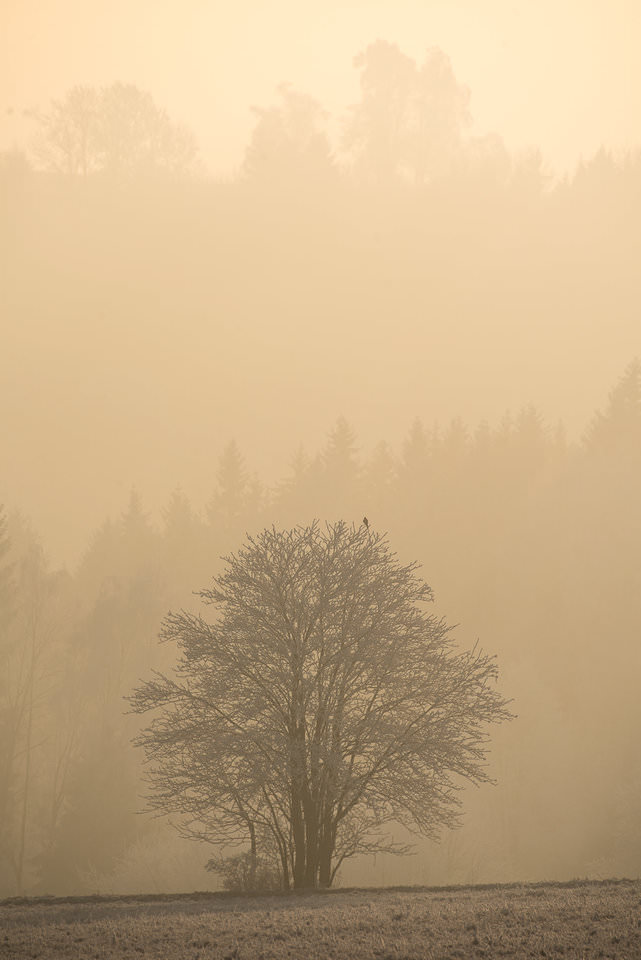
- Use multiple layers of high quality clothing. Merino wool-based layers can provide the necessary warmth – make sure that the base layers are close to your skin.
- Use warm waterproof shoes. If the snow is deep, you might want to use gaiters.
- Have two pairs of gloves – one thick hard shell for those waiting moments and the other should be thinner gloves to be able to manipulate your camera.
- Wear long johns for really low temperatures. Sometimes several layers might be necessary. Again, Merino wool can be very useful as a base layer.
- Have a thick and warm head cap, perhaps even two layers.
- Hand and toe warmers can be life-savers in very cold conditions, so if you know that it will be freezing cold, you should equip your hands and feet with those.
- Have multiple fully charged spare batteries. Remember, cold temperature drains batteries much faster than usual.
- Ideally, try to pre-set your camera settings before getting out (in car or at home) so that you only change the absolute minimum while shooting in harsh conditions.
- A tripod would be a must during early hours due to lack of ambient light and very slow resulting shutter speeds. However, make sure that you have foam or other material protecting your tripod legs – you do not want to be grabbing a bare aluminum tripod with your hands, as it will freeze your palms and fingers. I personally carry my tripod attached to my camera bag, so that I do not have to hold it for a prolonged period of time.
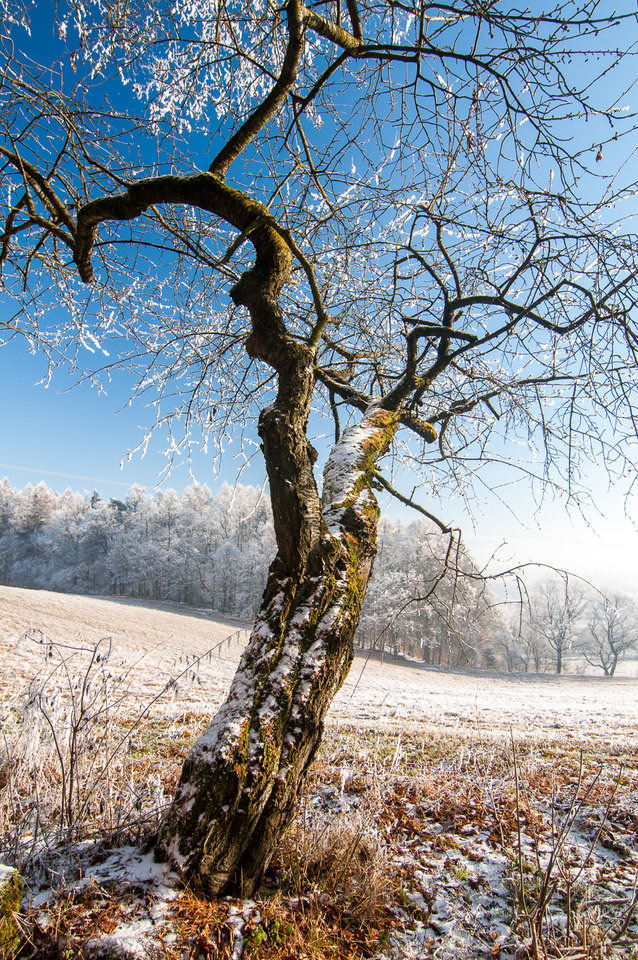
2) Plan Your Trip Immediately After Snowfall
To get amazing photos in the winter, timing is much more important than your gear. In lowlands where I live, unlike in the mountains, fresh snow is rare and often melts and gets dirty within a few days. I pay attention to weather forecast and especially try to identify short pockets of good weather following the snow storms. Often, even cloudy weather can be good, especially if the clouds are structured. Shooting while it is snowing hardly ever leads to good results (unless the snow storm is combined with direct sun, but that hardly ever happens).
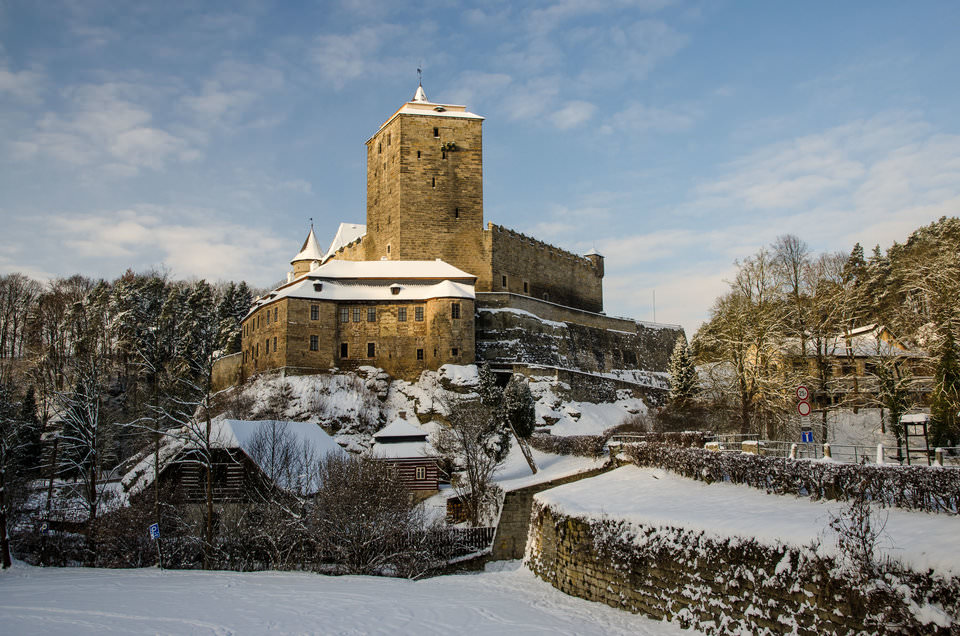
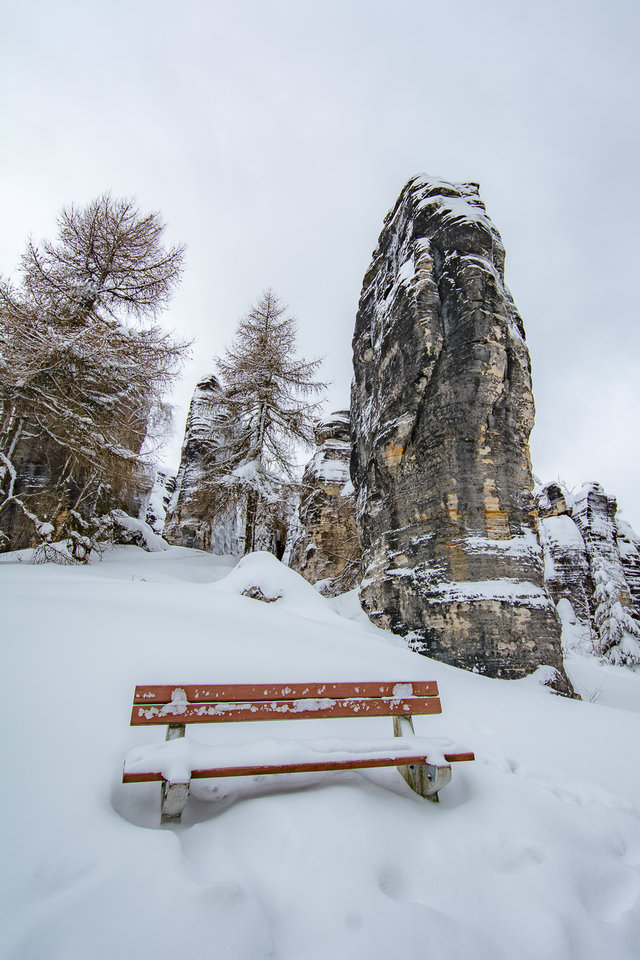
These images were captured after a snow storm. Here, the snow covers everything, including branches of the trees, roofs and roads. Some ugly subjects, which might otherwise be difficult to get out of your frame, such as trash bins in natural parks, literally disappear from your scene under the snow cover. The downside of this is the fact that roads might be difficult to ride – so again be extremely careful (and do not drive if you do not have winter tires and chains in reserve). Inform your family and close friends if some hazard may occur during your trip. Safety first – do not risk just for the prospect of a potentially great image. Your health and well-being are far more important.
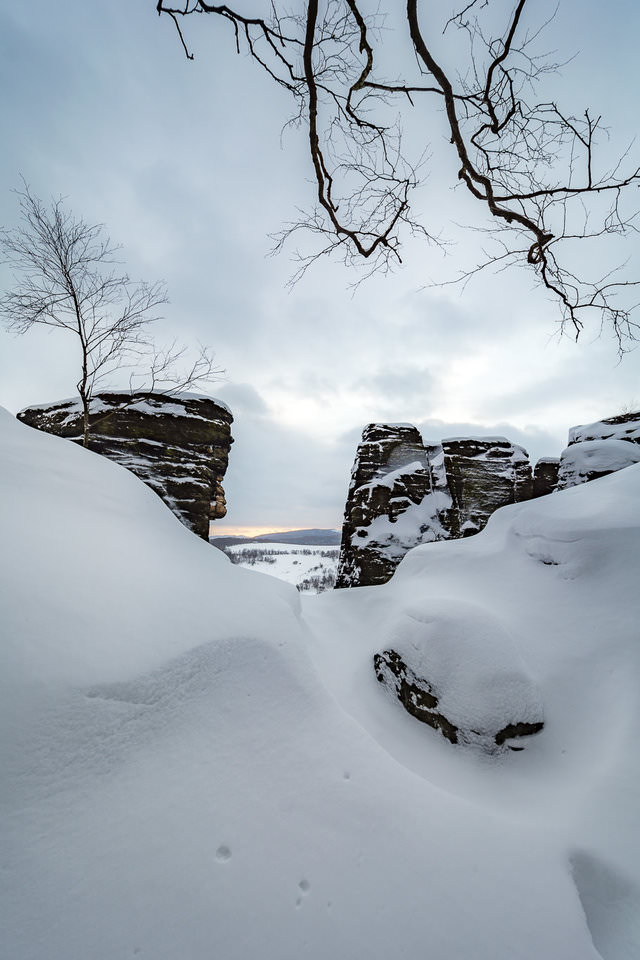
3) Work with Snow Structures in the Foreground
Wind and frost create beautiful shapes and structures in fresh snow. Such a theme is ideal for your foreground. If snow cover is older, perhaps already partly melted, look for foot imprints or any tracks in snow – these can serve as leading lines in your composition. Get low and close to those structures and use a wide angle lens. Control your depth of field by applying hyperfocal distance measurements to determine the best spot to focus on. And don’t forget about diffraction, as it can make snow particles and other important details look mushy rather than sharp and detailed.
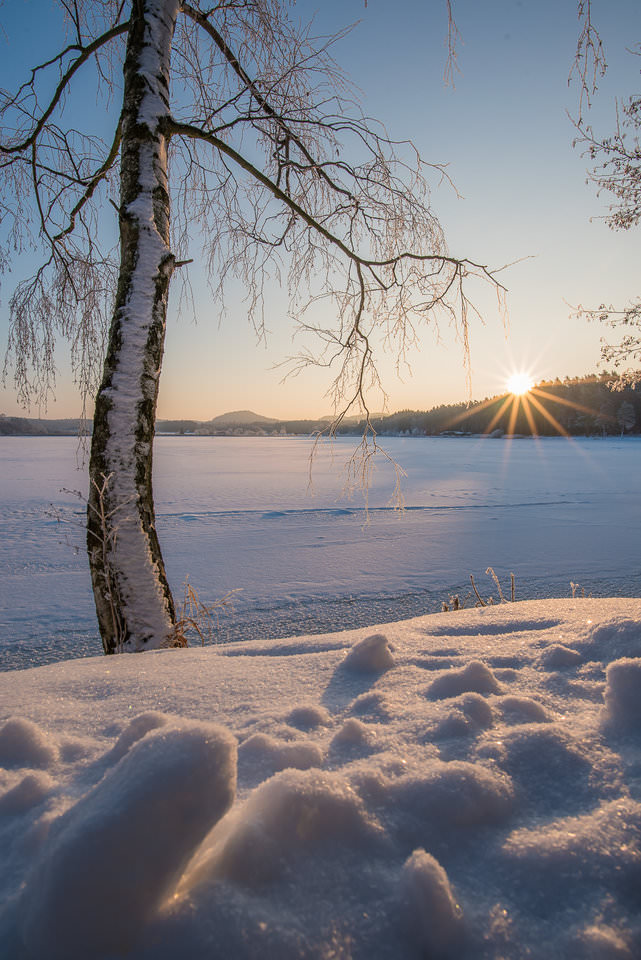
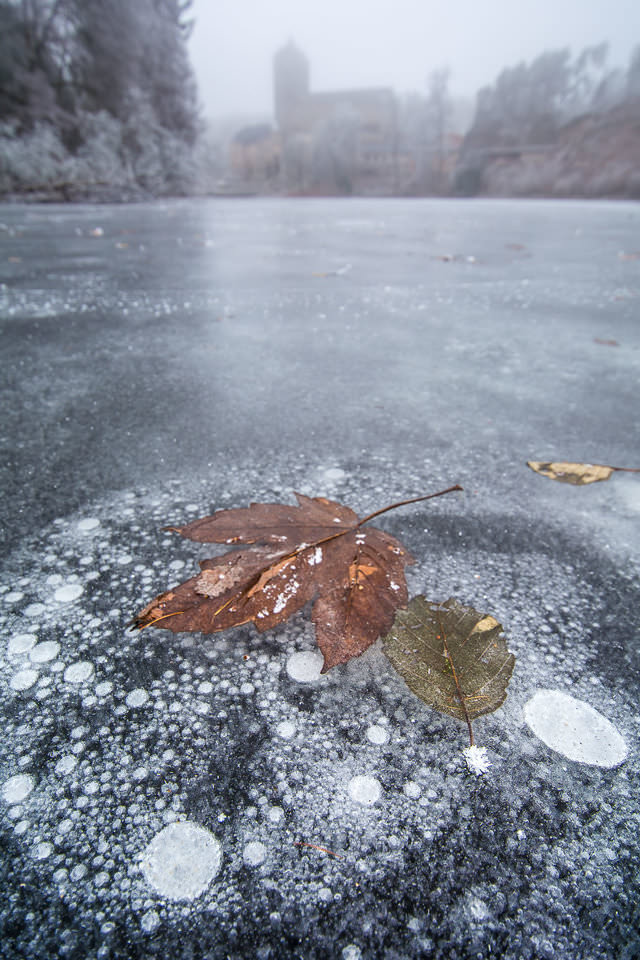
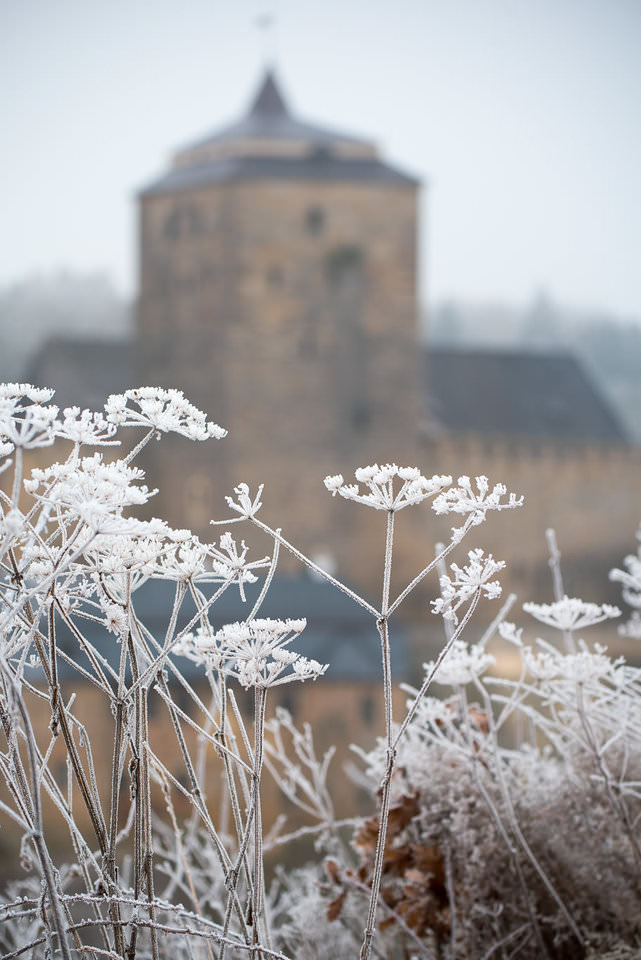
4) Use a Different Color Palette
What I enjoy about snow-covered landscapes is the very special color palette they exhibit. Snow and frost change the tonality of the landscape. The hue palette gets simplified. Snow softens strong tones and highlights the otherwise less visible pastel colors. Very often, the only saturated color is deep blue of the clear sky. Moreover, snow covers the unfitting color elements on the ground (such as non-complimentary green-brown hues of the empty fields).

During sunset and sunrise, the white snow nicely reflects the saturated tones of the sky. In extreme temperatures, I often observed rich purple and orange tones in the low sky above the horizon before sunrise and after sunset. Don’t be surprised to see bluish shadow areas in sunny conditions – it is just your brain that compensates your perception of the snow color in shadows in real life.
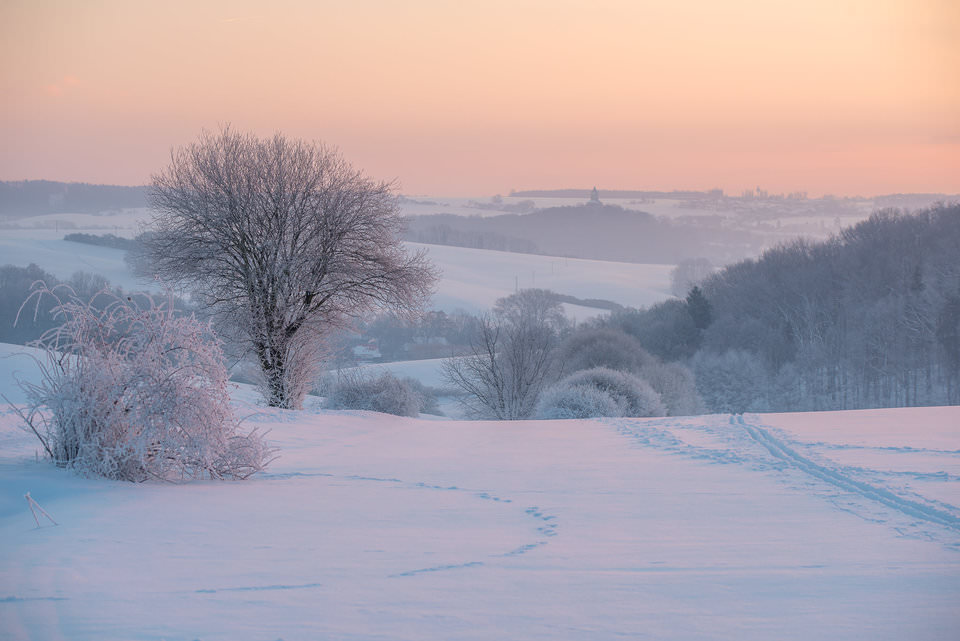
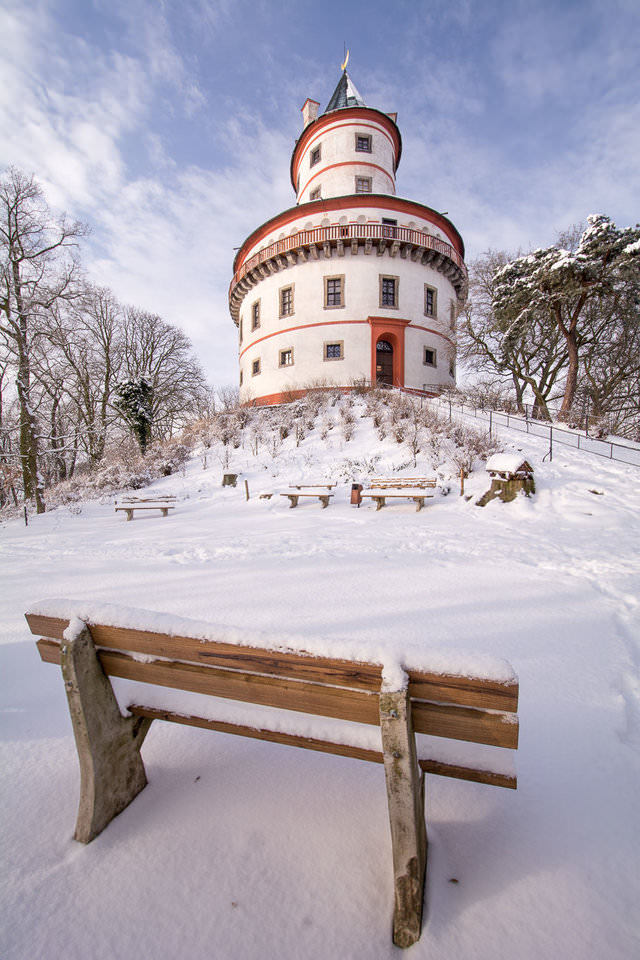
5) Use the Sun as the Primary Subject
The sun makes a wonderful primary subject when you shoot against it and include it in the frame. In the mornings and late afternoons, it hangs really low. If you have a good lens that handles flare well and draws nice sun-stars, the sun will serve as a wonderful compositional element in your images. To get those sun-stars to appear, you would need to stop down your lens to a very small aperture such as f/11 or f/16.
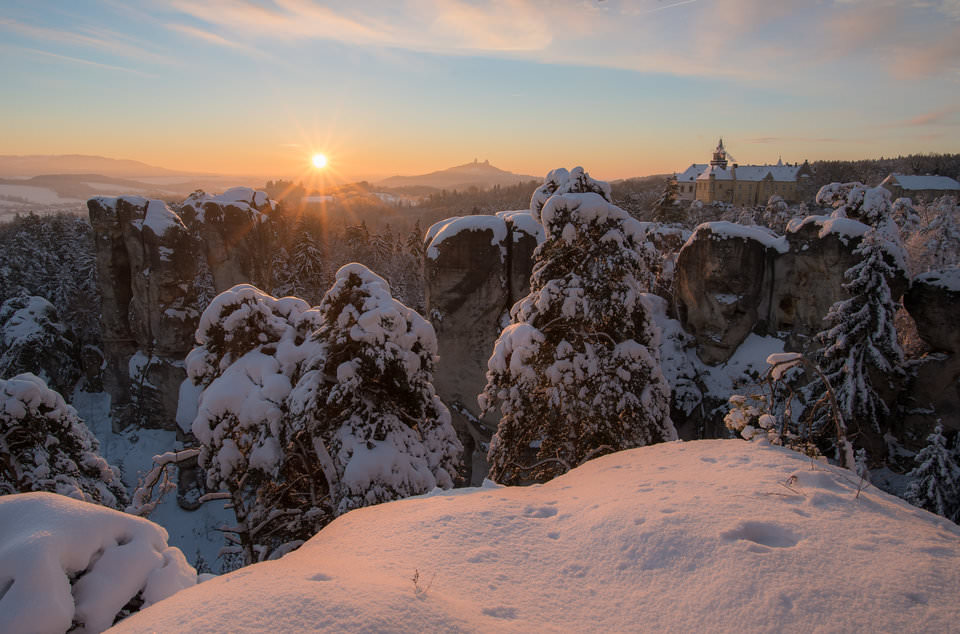
If you see flare and ghosting, you can use a great trick described in detail in Nasim’s article on eliminating ghosting and flare in landscape photography. If you are comfortable with image blending in post, there is another great technique to avoid over-exposure and diffraction: shoot two images – one for the sun at f/16 and one for the foreground and background at a larger aperture like f/8. Then combine the two images in post and use simple blending techniques with layers to bring those sun-stars into your image.
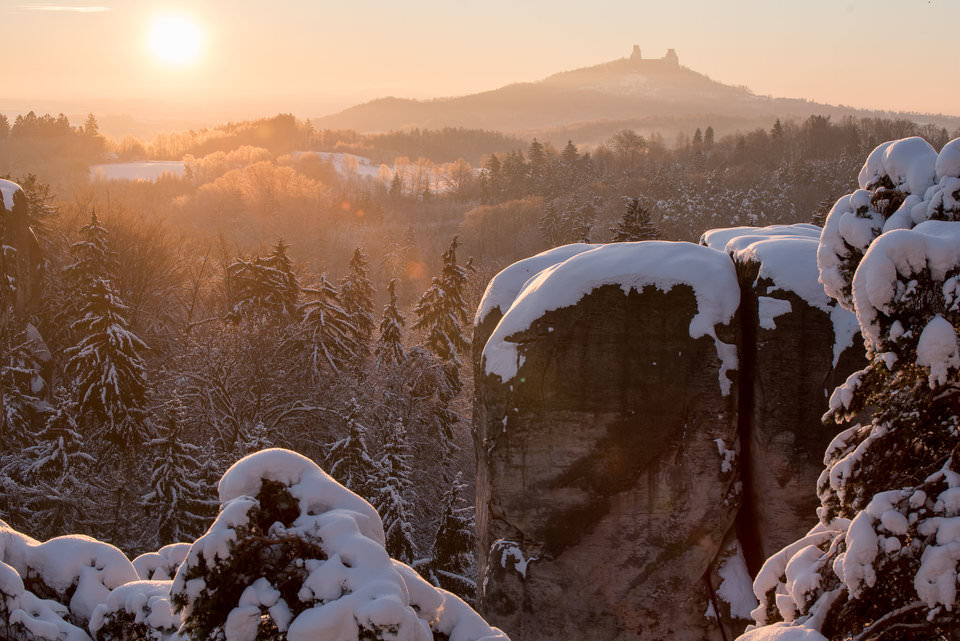
Also, consider if filters (such as CPL, UV or ND) are helpful in any way when shooting against the sun. If not, detach them, as they could make things worse in terms of additional ghosting and flare. If you do use filters, make sure that they are of high quality and have multi-coating applied to them. For more details about lens filters, see Nasim’s article on lens filters and also check out his must-have filters for landscape photography article.

6) Make Use of Frost
White frost can turn almost anything into a very attractive subject. Paradoxically, that is exactly what makes it difficult to photograph. With a thin layer of frost covering everything, landscape looks like a fairy tale, which may obscure the focus of the photographer for a good composition. I personally live in an area where the combination of freezing frost and blue sky is relatively rare.
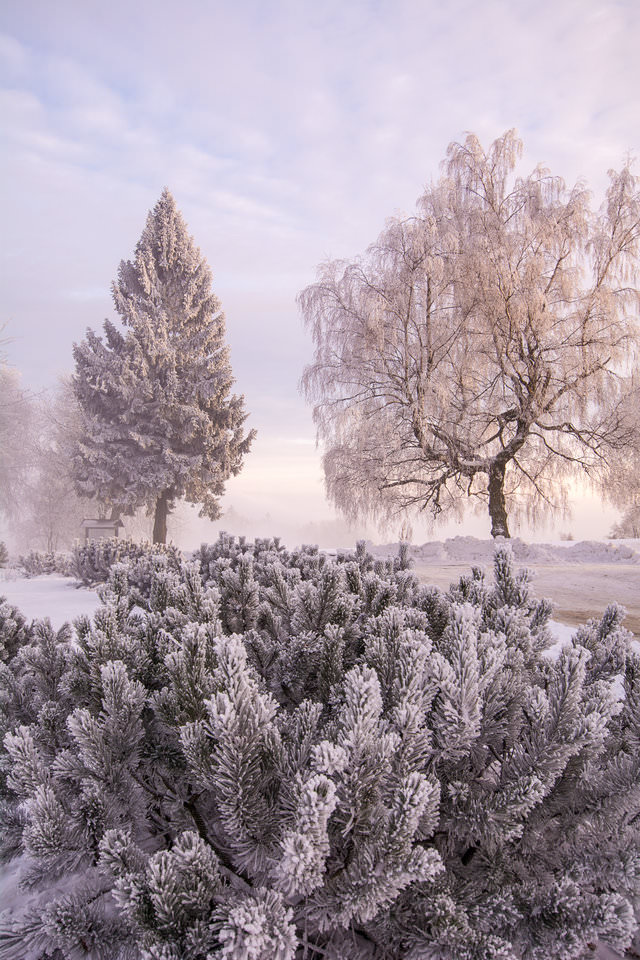
So when I got it earlier in January of this year, I got totally excited – and out of excitement I forgot to turn on VR on my lenses. When I discovered that, I was at first angry at myself, but then I took it as a good sign that I should take my time and focus on what I am doing, rather than let my excitement take over and ruin my photographs. Good composition and framing should always be your priority, but do not underestimate other variables that come into play while shooting, whether it has to do with proper exposure, focusing, depth of field or simpler things related to your camera settings.

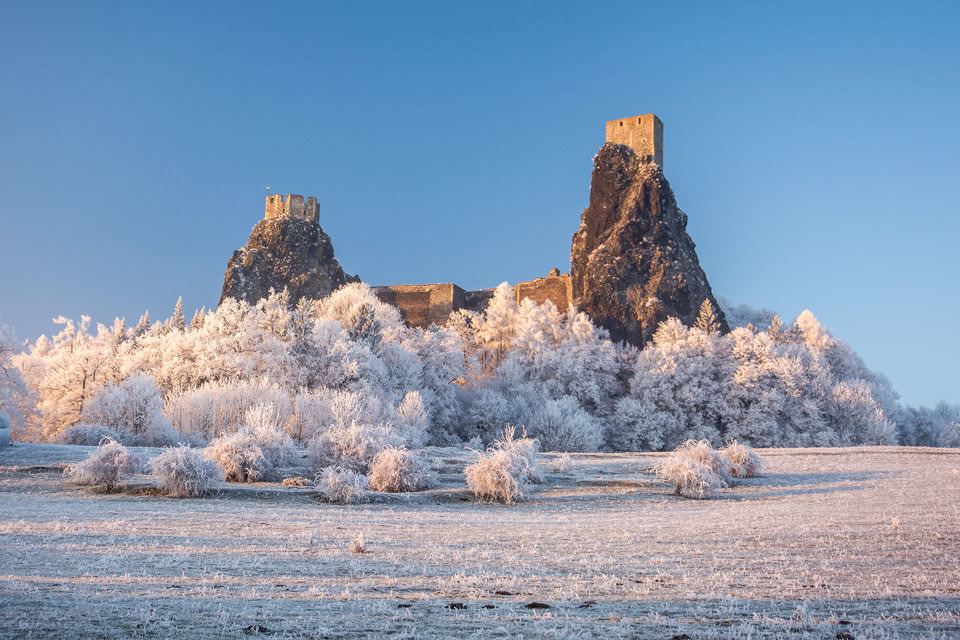
9) Try Black and White Photography
Even if I really enjoy the winter color palette, snow and frost often create handy conditions for black and white (B&W) photographs. Low sun prolongs the shadows of all subjects. These shadows can create interesting shapes and lines. I prefer B&W when I shoot in relatively harsh midday sun.
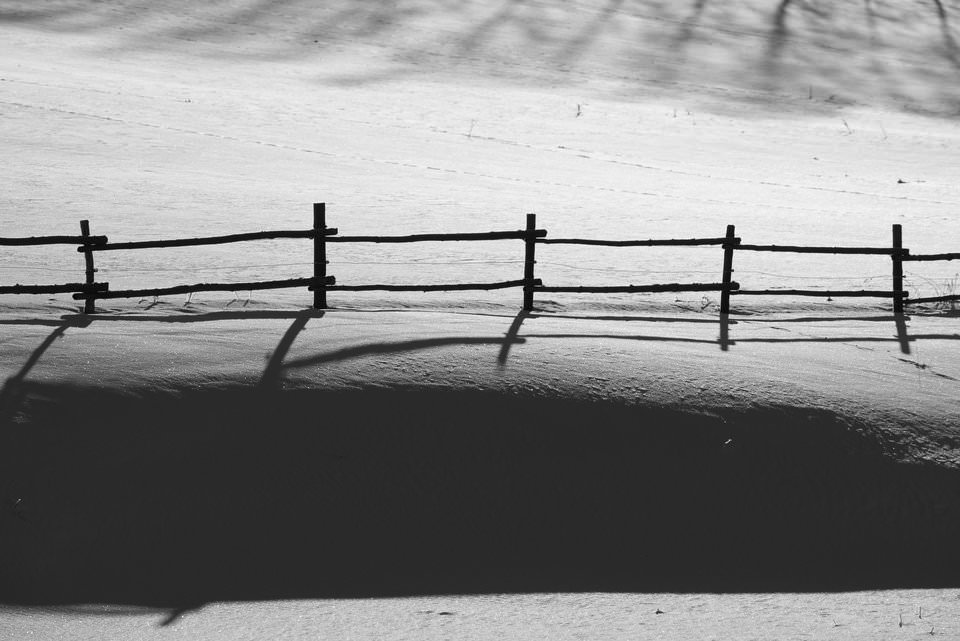
Basic composition elements (such as lines and shapes) are much more visible in black and white, especially once you highlight them a bit in post-processing, whether through color conversations or through dodging and burning. During sunny winter days, you can play with shadows projected on the snow and also get some great shots.
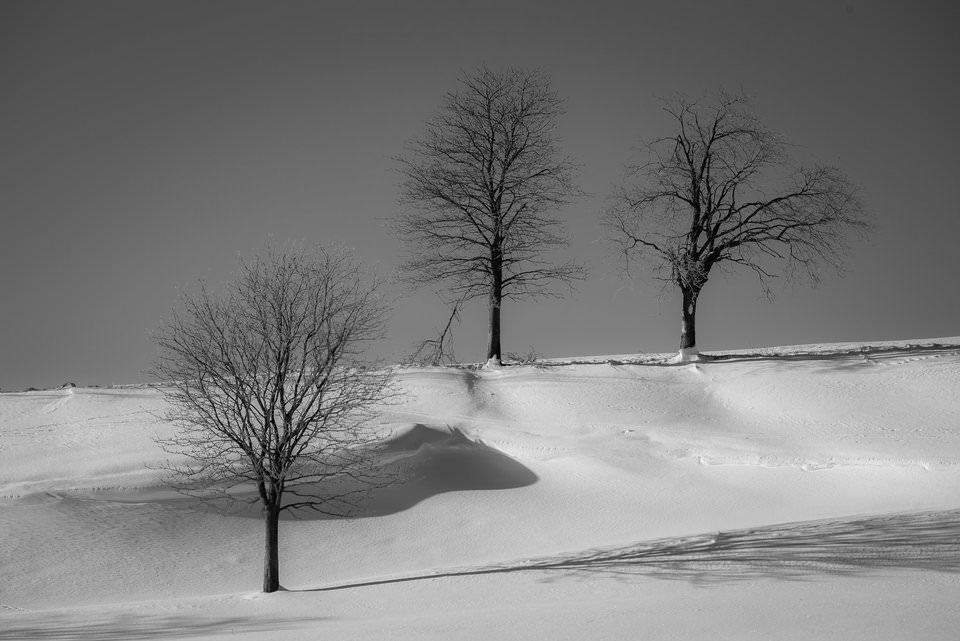
10) Go Above the Inversion
If you can, go above the inversion. What do I mean by inversion? In winter, there are often specific conditions when lowlands have lower temperatures than higher altitudes. This usually leads to low-hanging clouds that cover anything but mountains. Underneath the clouds, the light is usually dim and dull. Above the clouds, you get a clear sky – and the clouds below look like a sea. Only some mountains peak out and you can create some really interesting compositions with them. Come around sunrise and sunset – that is when the light and colors are going to be ideal.
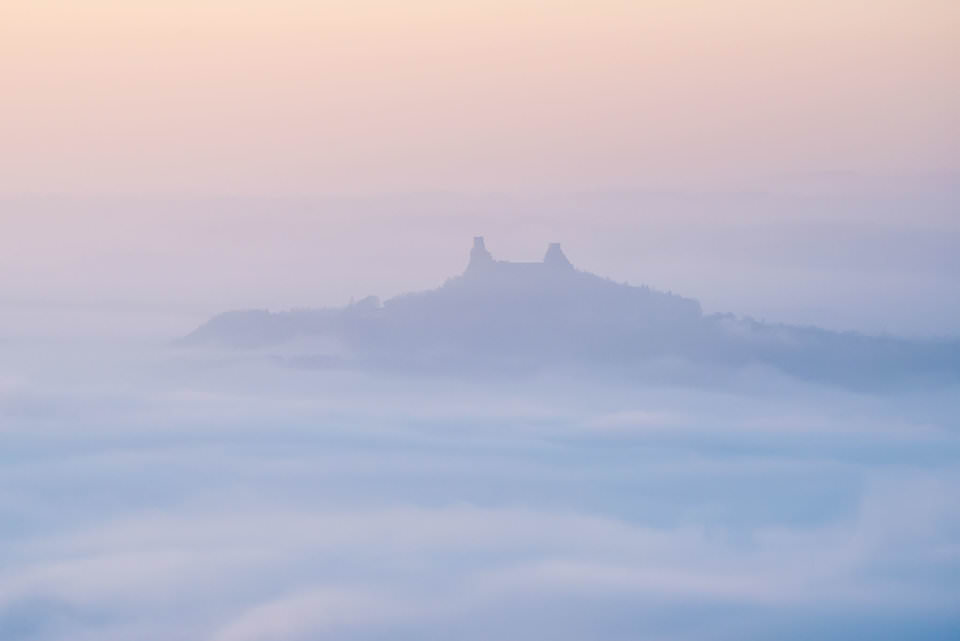
11) Look for Details
If snow covers the landscape, I recommend looking for tiny details. Even in cloudy days you can find some objects that look a bit different with snow than without it. Branches, fences and other mundane subjects are placed on a flattering white background. Ice, icicles, snowflakes, bubbles or cracks in ice – all of those are great themes to use. Do not forget to get really close to different structures and take a few detail shots which can make your winter portfolio more diverse.
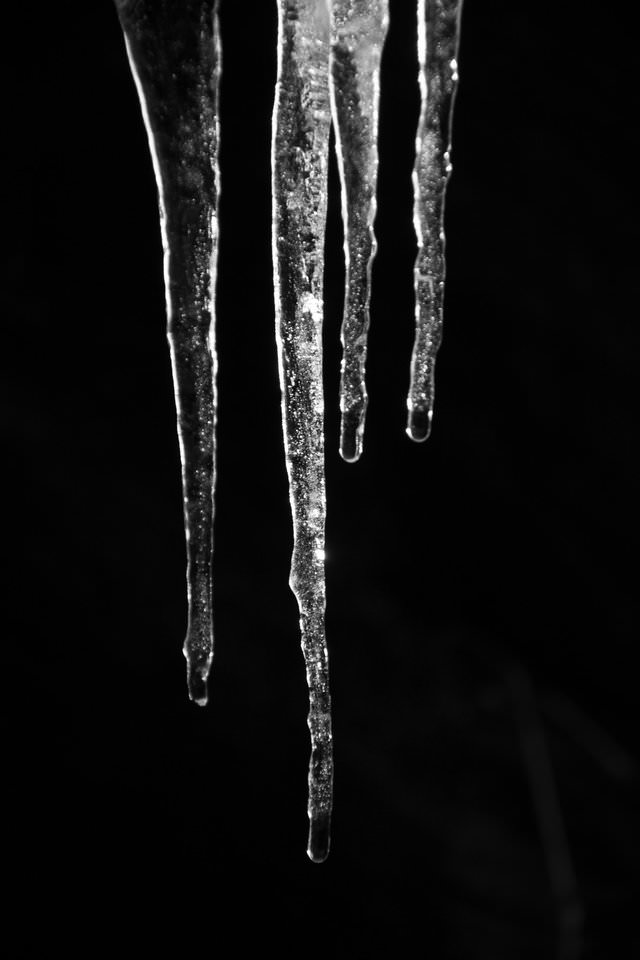
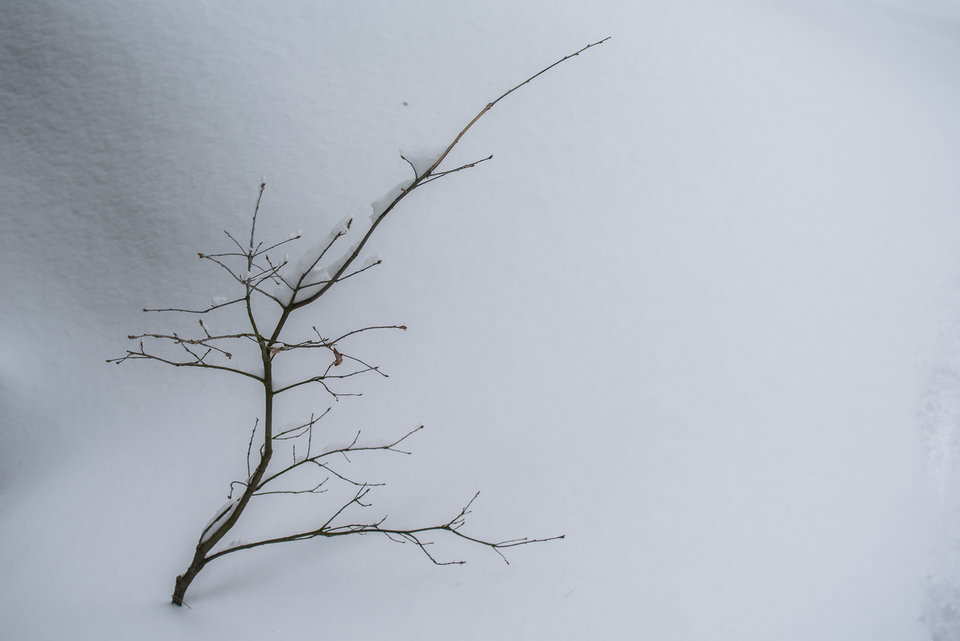

12) Try Different Post-Processing Techniques
This point will be a subject of another article. For now, I will recommend that you do not boost the “Clarity” slider too much. Compared to standard landscape images, I prefer using a different post-processing technique for winter landscapes. The simplification power of snow holds for luminosity as well: what portrait photographers know as high-key photography can be achieved with snow too. Mid and high tones dominate with very few areas reaching black point.
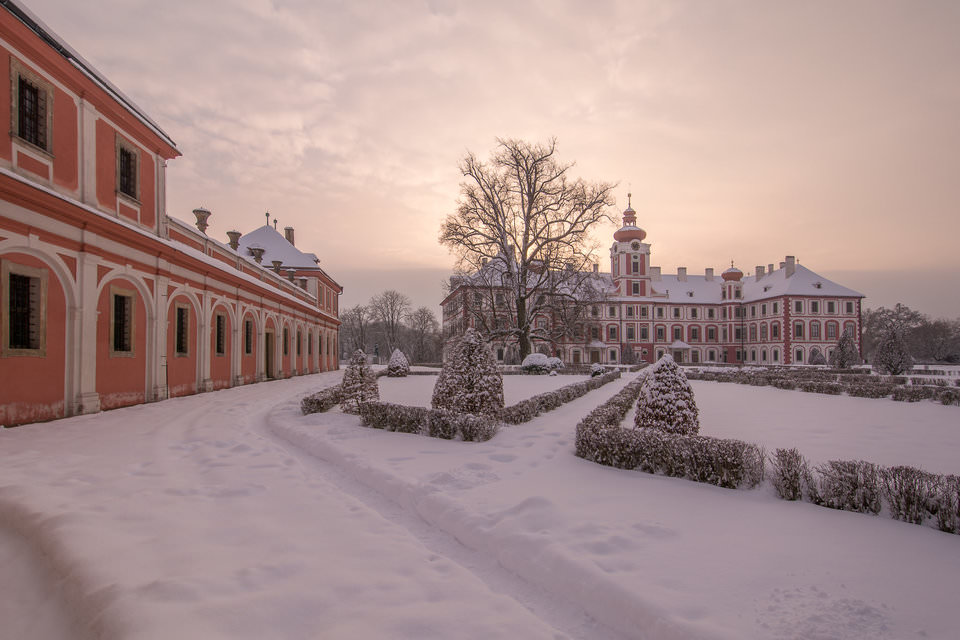
Hope you enjoyed this article on photographing winter landscapes. If you have any questions or feedback, please feel free to share your thoughts below!